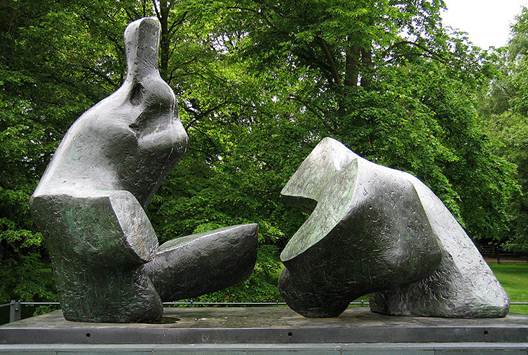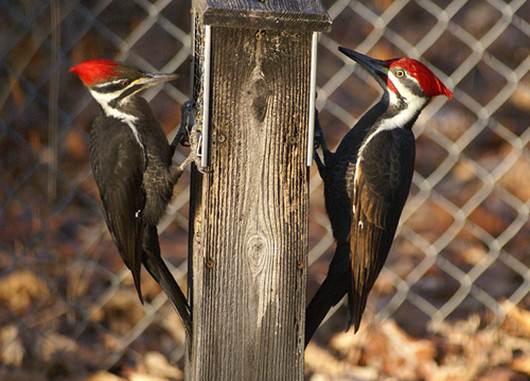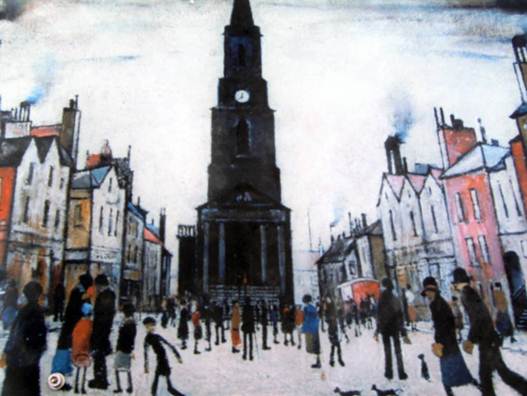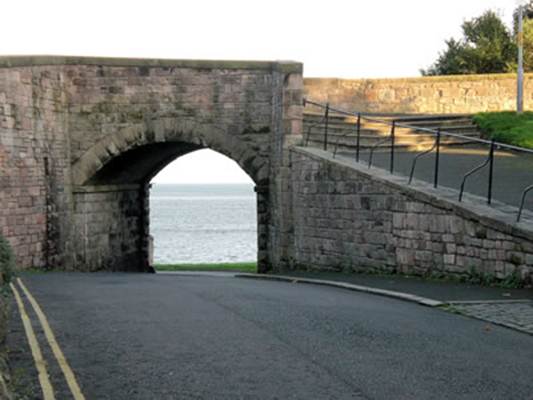9. Henry Moore Walk
Hertfordshire
Step into the mind of an abstract sculptor

Step
into the mind of an abstract sculptor
Henry Moore is known for his semi-abstract
bronze sculptures that are dotted around the world. The majority of his work
features human figures, usually female or mother-and-child, and has attracted a
huge following since his display at Tate Britain in 2012. The Henry Moore
Foundation is tucked away in Moore’s former home Hoglands in Much Hadham, and
includes over 70 acres of gardens displaying his monumental sculptures. This
walk takes you through these mystical grounds.
Sound of woodperckers
In Munch Hadham, face the Post Office and
turn right along the main street then left at the church Cross over Malting
Lane and take the path directly opposite. Bear right at the lane and turn off
right into Sidehill Wood. Follow the edge of the woodland and listen for woodpeckers.

Follow
the edge of the woodland and listen for woodpeckers.
Follow the bridleway passing several small
lakes and woods carpeted in bluebells. Just before the bridleway reaches Bourne
Lane, take a path left uphill through kissing gates. Follow marker posts to
another kissing gat.
An abstract world
Follow the right boundary fence passing a
striking reclining figure. Continue to reach a track, turn right and pass farm
buildings on the left. Continue into the Henry Moore Foundation grounds. Look out
for a reclining figure to your right and the Large Figure in a shelter
sculpture to your left. Follow signs through the grounds-you’ll see some mother
and child forms and the double oval symbolizing peace and harmony.

Continue
into the Henry Moore Foundation grounds.
Exit onto a lane at Perry Green. To your
right is the Hoops Inn, a 19th-century pub. Take the footpath across
the green to the right of the visitor centre. Follow the left hand ditch until
you reach a farm track. Follow a further ditch until you reach a broad path.
Keep ahead and turn left on another path. Continue until you reach a road.
Back to Much Hadham
This is Green Tye and nearby is The Prince
of Wales, another 19th-century pub. Turn left along the road for 300
yards and go right on a bridleway. Bear left at a fork and then right downhill.
Turn left into the field and follow signposts into woodland. Look out for red
kites and bluebells.

Back
to Much Hadham
At the bottom, follow the path to the left
and cross and footbridge to a lane. Turn left along the lane and at a junction
go right to reach a ford. Cross the footbridge and turn left along Malting Lane
to return to our previous route.
10. Market
town
Lowry’s Berwick upon Tweed
Northumberland
Laurence Stephen Lowry visited
Berwick-upon-Tweed several times from 1935 and his paintings of the town form
an unexpectedly sizeable part of his oeuvre. In Lowry’s time, Berwick was more
industrial and more like his native Lancashire than today; now it is a
miniature Chester or York in waiting, with its fascinating nooks and crannies.
No British city has a more dramatic arrival by train, across the breathtaking,
28-arch viaduct of the Royal Border Bridge, Spanned by two further smaller
bridges, the town accompanies the river, tumbling downhill to the sea through
broad cobbled streets and alleyways.

Lowry’s Berwick upon Tweed
Matchstalk figures
The best way to see how Lowry passed his
time in Berwick is to follow the Lowry Trail. In an Imaginative touch, the
trail is supported by 18 prints of Lowry’s pictures in situ, overlooking places
that he depicted, such as the narrow alley of Sally Port, graceful Palace
Street or The Stanks, where he painted a football match staged in a dry moat.
You can’t help noticing that Lowry wasn’t above indulging in the odd piece of
artistic licence – adding a chimney here, a curious inland islet there – but
what is really striking is just how unchanged the scenes he depicted have
remained.
Make time, as Lowry did, to visit Berwick’s
beaches. Low tide reveals rock pools, but Lowry’s picture remind you just how
far north you are: most of his seaside figures remain buttoned up with coats
and jumpers, even in sunshine.
Elizabethan walls
Just three miles from the Scottish border,
Berwick has been English since 1482, but changed hands at least 13 times before
that, which explains the Elizabethan walls hewn from local sandstone. The rest
of the town is sealed up by a medieval wall, making Berwick the only completely
walled town in Britain. It’s an easy walk around the walls, taking in
sensational vantage points, such as Meg’s Mount, looking north to the
Lammermuir Hills, southwest to the cheviots, but most stirringly of all, down
the coast to Lindisfarne, and Bamburgh Castle, 25 miles as the oystercatcher
flies.

Elizabethan
walls hewn from local sandstone
Berwick’s cobbled, steep streets boast
evocative names such as Foul Ford and Easter Wynd. The place to
head for though is Bridge Street, a sleepy, eclectic lane awaiting
discovery by the world’s guidebooks for its coffee houses, galleries, antique
and interior design shops, a music store selling curiosities such as Austrian mouth
harps, and where many building remain decked with 1940s fittings straight out
of a post-war film noir.